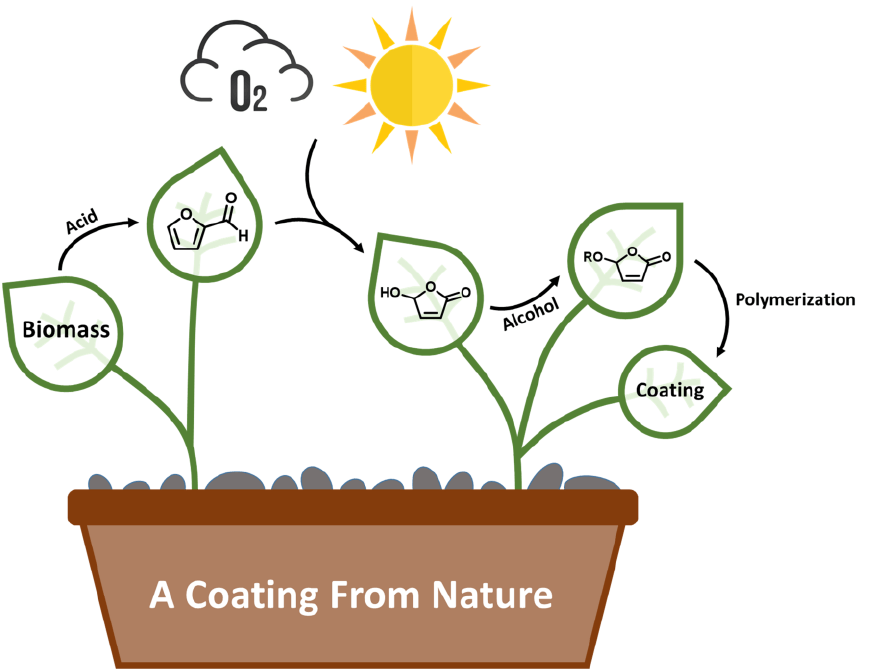Want to know more about this article?
Green chemistry creates a coating from biomass
Organic chemists from the University of Groningen and global producer of paints and coatings AkzoNobel developed a process that allows them to turn biomass into a high-quality coating using light, oxygen and UV light. This process combines a renewable source with green chemistry and could replace petrochemical-based monomers such as acrylates, which are currently used as building blocks for coatings, resins and paints.

To make more sustainable coatings, scientists from the University of Groningen, led by Professor of Organic Chemistry Ben Feringa, started with lignocellulose, the most abundantly available raw biomass material on Earth. ‘Lignocellulose can be cracked with acid to produce the chemical building block furfural, but this needs to be modified to make it suitable for the production of coatings,’ says George Hermens, PhD student in the Feringa-group and first author of the paper. He then converted the furfural into a compound, hydroxybutenolide, that resembles acrylic acid. ‘The chemical conversion uses only light, oxygen and a simple catalyst and produces no waste. The only side product is methyl formate, which is useful as a replacement for chlorofluorocarbons in other processes.’
Part of the structure of hydroxybutenolide is similar to acrylate, but the reactive part of the molecule is a ring structure. ‘This means that it is less reactive than acrylate and our challenge was to further modify the molecule so that it would produce a useful polymer.’ This was achieved by adding different green or biobased alcohols to the hydroxybutenolide, creating four different alkoxybutenolide monomers.
These monomers can be transformed into polymers and coatings with the help of an initiator and UV light. By combining different monomers, coatings with different properties were created.
Hermens: ‘We managed to create coatings from a renewable source, lignocellulose, using green chemistry. And the quality of our coatings is similar to that of current acrylate-based coatings.’
For two steps in the process, patent applications have been filed with AkzoNobel, the industrial partner in the project.
The project was initiated by the Advanced Research Center Chemical Building Blocks Consortium (ARC CBBC), a Dutch national public-private research centre that develops new chemical processes and chemical building blocks for novel energy carriers, materials and chemicals for sustainable chemistry. ‘The programme entails all the steps from fundamental scientific discovery to process and product development. In this long-term partnership, universities and the chemical industry join forces to develop the green chemistry of the future,‘ says Ben Feringa, one of the founders of this centre.
“The work we’re doing together is a fantastic example of collaborative innovation in action,” says AkzoNobel’s Director of Coatings Technology, Andre van Linden, who coordinates the partnership with the ARC CBBC. “They have very specific technology and expertise, which is vital given that we’re dealing with unique green chemistry.”
Reference: Paper in Science Advances